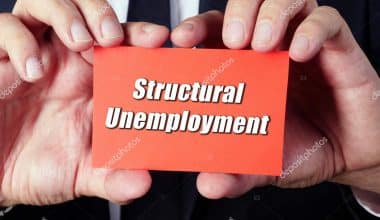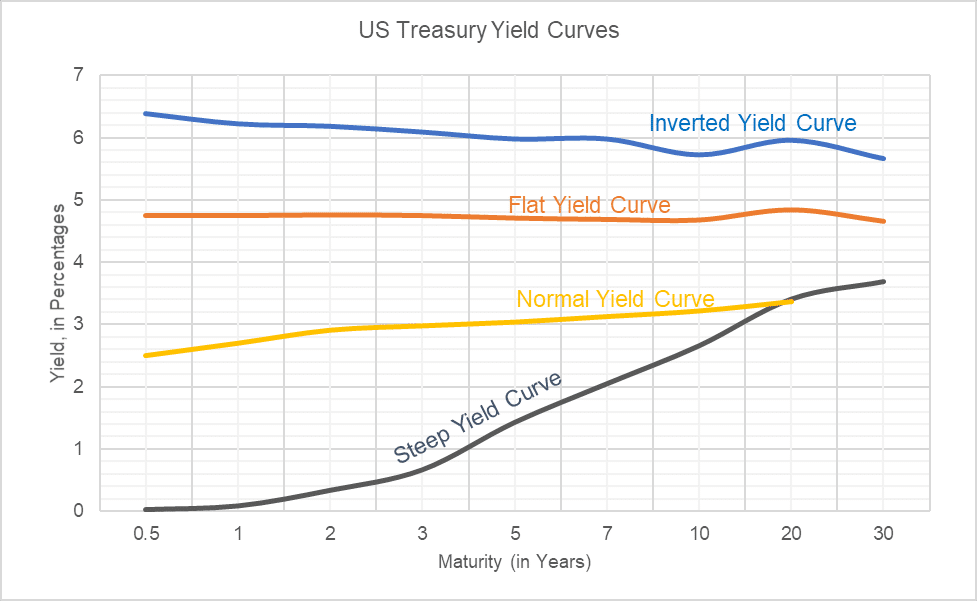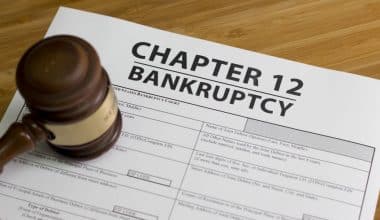Understanding how to anticipate and respond to attrition is an important part of developing a strong, productive workforce. Employee churn refers to a reduction in staff, while customer attrition refers to a decrease in customer base; knowing how to identify and measure both, as well as understand why it occurs and manage attrition proactively, will assist your organization in identifying its weaknesses and maintaining its strengths. In this post, we will analyze all you need to know about attrition in the business including the rate and the full meaning in HR, among other important facts. Let’s get to it.
What is Attrition?
Attrition in business, also known as “churn” or “turnover” in HR meaning, refers to an organization purposefully reducing the size of its workforce by voluntarily not replacing employees who leave. This term is defined as a gradual but intentional reduction in staff numbers that occurs when employees leave a company and are not replaced.
Attrition meaning in business is commonly used to describe human resources (HR) professionals’ downsizing of a company’s employee pool. Organizations use attrition as a form of workforce management to deal with fluctuations in demand for services or products by lowering operational costs. As a result, churn may be viewed positively in some cases, and it also necessitates careful planning to ensure that attrition does not cause more harm than good.
employee churn occurs when an employee authorized to work in a specific area or company decides to leave that organization voluntarily for personal reasons such as pregnancy or retirement, a reduction in the workforce due to downsizing and unemployment, downsizing of the organization’s services, or relocation of jobs outside the country.
Some managers believe employee churn can be very costly for an organization (estimated at up to 50% of the departing employee’s annual salary). Others accept employee churn as a natural byproduct of having employees and may encourage it as long as it does not impair performance.
Types of Attrition
There are several types of attrition in business, including:
#1. Voluntary
When employees leave a company on their own accord, this is referred to as voluntary attrition. Employees who leave voluntarily may indicate that the company is having problems. Alternatively, it could imply that people are leaving for personal reasons unrelated to the business.
Employees who retire may also experience voluntary attrition. This is also known as natural attrition. Employees retiring should not be a source of concern for management unless the company has an unusually high rate of early retirements.
#2. Involuntary
When a company fires an employee, this is referred to as involuntary attrition. This can occur as a result of poor or disruptive performance by an employee. An employee’s dismissal could be linked to misconduct.
Companies may be forced to eliminate a position. Alternatively, they may be forced to lay off employees due to deteriorating economic conditions.
#3. Internal
Internal attrition is the movement of employees from one department or division to another. The employee is not leaving the organization. They’re simply moving within it.
Internal attrition can indicate that a company provides excellent opportunities for advancement. On the other hand, if a department has a high rate of internal attrition, it may be experiencing issues. If necessary, the company should investigate and address them.
#4. Demographic-Related
Demographic-related attrition occurs when members of specific demographic groups leave a company unexpectedly and quickly. Women, ethnic minorities, veterans, older workers, and people with disabilities may be among them.
Rapid action should be taken to determine what caused such departures. Rectifying demographic-related employee churn is essential because inclusion should be a top priority for every business. Furthermore, a company can halt the loss of valuable and promising employees. Diversity training can be beneficial.
#5. Customer
While not directly related to employee churn, it is critical for a company to be aware of customer attrition.
When a company’s customer base begins to shrink, this is referred to as customer attrition. The rate of customer attrition is also known as the churn rate. Customer attrition can indicate that a company is in trouble and may lose revenue.
What Factors Can Cause Attrition?
As an HR manager in a business or company, you’ve probably seen an employee take attrition for a variety of reasons: they got a better offer, their spouse was transferred, or it might end up meaning they couldn’t stand the company any longer. All of these are considered turnover as a result of factors related to the job or company. However, employee churn can also be caused by issues outside of the workplace.
The following factors can cause staff employee churn:
- Opportunities for advancement or professional development are limited.
- Salary and workload disparities
- Role conflict (for example, unfulfilled expectations)
- Inadequate training and skills for task completion
- Inadequate management support
- Lack of recognition (for example, for achievements)
- Low job satisfaction and low pay
- Poor working relationships with coworkers, subordinates, superiors, and human resource professionals
- Personal reasons (for example, caregiving obligations).
The Advantages of Attrition
Employee churn has some advantages. In its most basic form, it is a natural reduction in the workforce. When the economy is in bad shape or a recession is looming, a company would face the prospect of having to lay off employees (when it doesn’t want to lose them) if it weren’t for employee churn.
Here are some other instances where employee churn may be beneficial:
- If one company acquires another and must deal with redundancies.
- If a company redirects its vision toward a new goal and must restructure or reduce the workforce.
- When new employees are needed to refresh a workplace environment with new ideas and new energy.
- When a company seeks natural opportunities to better diversify a department or division.
- When employees with poor attitudes or performance should be removed to improve workplace culture, reduce costs, or make room for new hires who are a great fit.
What is HR Attrition Rate?
An attrition rate is a calculation used by businesses, usually human resources departments, to assess an organization’s ability to retain employees or customers. It is also referred to as the churn rate.
Attrition rates are frequently expressed as a percentage of the average employee population. Without this qualifier, an attrition rate in business is assumed to be employee attrition expressed as a percentage of the total headcount. A change in the attrition rate in business can alert management to potential internal problems that are causing employee departures.
The formula for the attrition rate in business is:
Attrition rate = number of departures/average number of employees1 x 100
Say that 25 employees left ABC Company last year. In addition, the company had an average of 250 employees for the year ((200 + 300)/2).
With those figures, you can now calculate the attrition rate:
- Attrition rate = 25/250 x 100
- Attrition rate = 0.1 x 100
- Attrition rate = 10%
To calculate the average number of employees, add the number at the start of the time period to the number at the end of the time period. Then divide the result by two.
Why It’s Important to Measure Attrition
By measuring an attrition rate, a company may pinpoint problems that are causing voluntary employee churn. That’s significant because the costs of losing valuable employees you’d like to keep can be staggering.
For example, the cost of hiring and training a new employee when an existing employee leaves voluntarily can range from one-half to two times the employee’s annual salary. When knowledgeable, experienced employees leave and productivity suffers, the company’s profits can suffer.
Customer loss can occur in tandem with the loss of valued employees. This could mean another hit to profits linked to former employees who were familiar with the company’s products and services and knew how to sell them.
What are the Attrition Drivers?
Employee churn drivers are variables that may indicate overall employee satisfaction. Poor organizational fit, which can simply be defined as employees believing the organization does not value them or their skills, is the primary attrition driver. Other complex staff turnover drivers include job attitudes, a lack of opportunities to learn new things at work, a lack of upward mobility or advancement, limited recognition, and a lack of managerial support.
Organizations should strive to reduce attrition drivers in order to reduce churn rates. This is because attrition models show where churn can be reduced, attrition drivers show where attrition levels can be changed, and attrition-related factors show how churn can be influenced.
How do you Resolve Attrition?
Attrition is frequently predicted in attrition models based on an analysis of one or more factors related to attrition identified through survey results. Employees are asked about their intentions to leave in survey-based attrition models. Respondents may be asked, for example, how likely they are to stay with the organization in the coming year, and how important different aspects of work are to their decision to stay with the organization.
Drivers such as demographic characteristics (e.g., age), tenure on the job, working conditions (e.g., schedule flexibility), and organizational factors (e.g., mission) may be included in the attrition model.
Managers can develop strategies to reduce attrition based on attrition models. Attrition models, for example, may predict that younger employees with fewer years of tenure and lower education levels are more likely to leave, so managers can target these groups with retention initiatives such as tuition reimbursement programs for college graduates. Attrition models quantify turnover risk at the individual level, allowing organizations to focus limited resources on employees who are most likely to leave.
However, some employee turnover is normal. Even at the most beloved employers, employees will leave for a variety of reasons, including retirement, relocation to a new area, or a career change.
What is HR Attrition vs Turnover?
To fully comprehend attrition in business, one must first understand how it differs from the concept of “turnover.” Turnover is a situation in which an employer steps in to replace employees who have left the company or division. In contrast, the meaning of HR attrition in business refers to a situation in which no replacement actions are taken, resulting in the position or asset being eliminated.
Attrition vs. Layoffs
Employees may choose to leave their current position to pursue a new one or to retire. An attrition policy uses such voluntary departures to reduce overall staffing.
Laying off employees is not a voluntary action on the employee’s part. However, attrition occurs when a company does not immediately hire as many new employees as it laid off. Layoffs occur when a company faces a financial crisis and needs to reduce its workforce to stay afloat.
Certain departments may be reduced or eliminated as a result of changes in company structure or a merger. Rather than relying on natural attrition from voluntary employee departures, layoffs are usually required.
How Does Employee Attrition Differ From Customer Attrition?
Employee attrition is a decrease in the number of employees working for a company caused by employees leaving and not being replaced. Customer attrition, on the other hand, refers to a decrease in the number of customers.
Is Employee Attrition Good or Bad?
Employee turnover can be a problem for businesses because it means a loss of valuable talent in the workforce. It can, however, be beneficial. Attrition can force a company to investigate the issues that are causing it. It also enables businesses to reduce labor costs because employees leave of their own volition and are not replaced. It may eventually result in the hiring of new employees with fresh ideas and energy.
What is the Main Challenge with Attrition?
The main issue is productivity loss. Employees who stay on the job are more likely to face productivity issues, especially if the unfilled roles are critical to their output. Employee attrition is likely to reduce productivity in highly interdependent organizations.
Is Attrition a KPI?
Yes. The attrition rate is calculated as a percentage of employees who left a company for any reason during a given time period. This recurring metric determines how well a company retains its employees.
What is Attrition in the Workplace?
Employee attrition in the workplace refers to employees leaving an organization for any reason (voluntary or involuntary), such as resignation, termination, death, or retirement.
How can Staff Attrition be Prevented?
5 Ways to Avoid High Employee Turnover include:
- Set reasonable expectations.
- Show your support and gratitude.
- Employees should be trained using effective tools.
- Communicate effectively and frequently.
- Recognize and compensate high performers fairly.
Conclusion
Attrition is the gradual but intentional reduction in the workforce that occurs when employees leave a company and are not replaced. Employees may voluntarily or involuntarily leave their jobs. They could also simply transfer from one department to another. Attrition occurs when the former department fails to replace the employee. This guide will teach you everything you need to know about attrition.
Related Articles
- HR ANALYTICS: Importance, Examples, Courses, Jobs
- Voluntary AD&D: What is Voluntary AD&D? Pros & Cons (+ Free tips)
- Turnover Rate: Definition, rate, and How to calculate it
- PRODUCT ANALYTICS: Detailed Guide With The Top 5 Tools
- EMPLOYEE ATTRITION: Meaning, Rates, and Analysis Report






